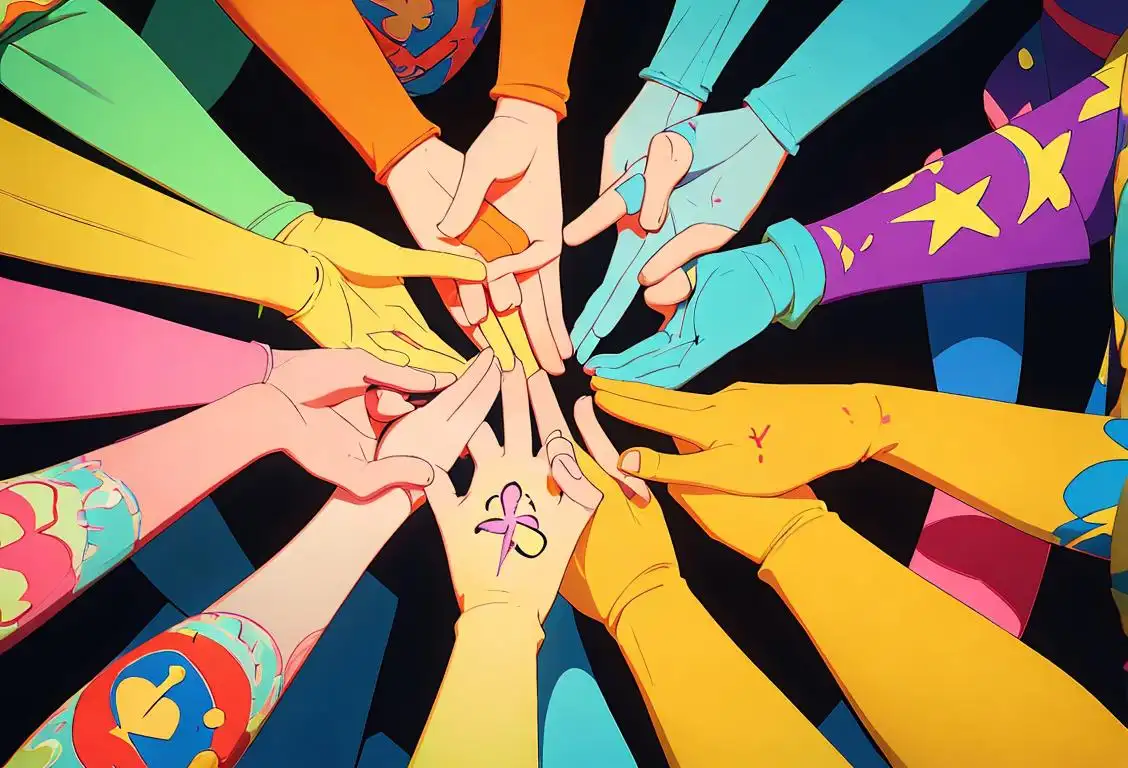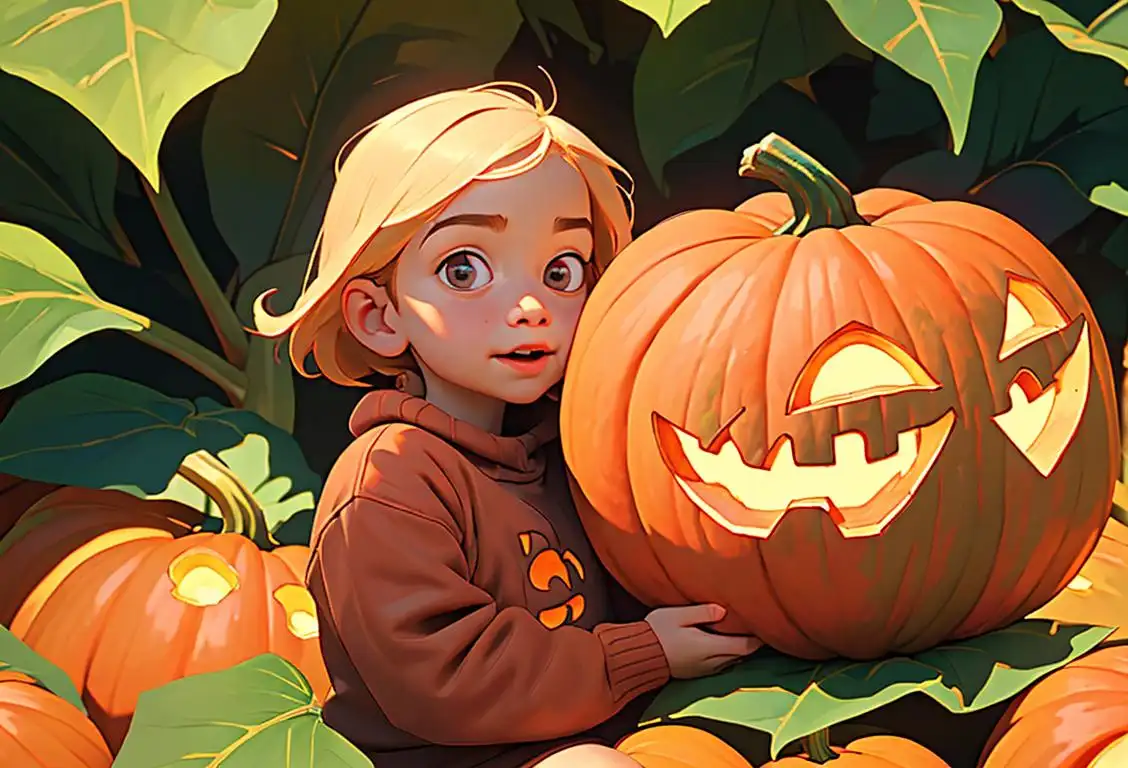National Twin Sister Day

Hey there, fellow internet history enthusiasts! Get ready to celebrate National Twin Sister Day, a special day dedicated to celebrating the bond between twin sisters. Whether you have a twin sister yourself or know someone who does, this day is all about appreciating the unique connection between these special siblings. So, let's dive in and discover the fascinating internet history behind National Twin Sister Day!
When is Twin Sister Day?
It's national twin sister day on the 3rd November.
The Origins of National Twin Sister Day
Every year on the 3rd of November, people around the world honor and celebrate the joy of having a twin sister on National Twin Sister Day. While the exact origins of this day remain a mystery, it has gained popularity over the years thanks to the power of the internet.
With the rise of social media and online communities, people have found new ways to connect and share their love for their twin sisters. National Twin Sister Day serves as a reminder to cherish this unique bond and appreciate the moments spent together. It's a day to reflect on all the shared memories, inside jokes, and support that only a twin sister can provide.
Fun Ways to Celebrate
Now that you know the significance of National Twin Sister Day, here are some fun ways to celebrate:
- Plan a special outing with your twin sister, whether it's a picnic, a shopping spree, or a movie night.
- Create a collage of your favorite twin moments and share it on social media using the hashtag #TwinSisterDay.
- Write a heartfelt letter to your twin sister expressing your love and appreciation.
- Organize a surprise party for your twin sister, inviting close friends and family to join in the celebration.
- Engage in activities that you both love, such as cooking together, playing sports, or binge-watching your favorite TV series.
Did You Know?
Did you know that the odds of giving birth to identical twins are approximately 1 in 250 births? The scientific term for identical twins is 'monozygotic,' which means that they develop from a single fertilized egg that splits into two embryos. It's truly a unique and remarkable phenomenon.
Tags: loved ones, fun
History behind the term 'Twin Sister'
1400s
The Dawn of the Term
In the 1400s, the term 'twin sister' originated as a way to describe a female sibling who was born at the same time as another sibling. This term was used to highlight the special bond between two sisters who shared the same birthdate, which was considered a rare and unique occurrence.
1719
Introduction of the term 'twin sister'
The term 'twin sister' was first introduced in 1719 to describe the relationship between two sisters who were born from the same pregnancy. This term was used to emphasize the unique bond that exists between siblings who share the same womb. It became a common phrase to refer to sisters who were born at the same time and share a deep connection.
14th century
Origins of 'twin'
The word 'twin' has its roots in the Old English word 'twinne' which means 'two by two' or 'double'. This term originally referred to any two things that were alike or paired together, and later specifically came to represent siblings born from the same pregnancy.
800 BCE
Ancient Greek Connection
The term 'twin sister' can trace its roots back to ancient Greece, where the concept of twins held great significance in mythology. In Greek mythology, twins were believed to possess a special bond, often sharing a divine connection. This belief influenced the usage of the term 'twin sister' to refer to a female sibling who shares the same birthdate and DNA.
600 BC
Ancient Greece: The Birth of the Twin Sister Concept
In ancient Greece, the concept of the twin sister began to emerge. The Greeks believed that fraternal twins, born from separate eggs, were a result of the mother releasing two eggs during ovulation, which were then fertilized by two different men. This led to the idea that twins shared the same mother but had different fathers, laying the foundation for the term 'twin sister.'
1100s
Origins of the term 'sister'
In the 1100s, the term 'sister' originated from the Old English word 'sweostor,' derived from the Proto-Germanic word 'swestēr.' This term referred to a female child of the same parents or from the same family. The concept of sisterhood has deep historical roots across numerous cultures and has been celebrated and acknowledged in various ways throughout history.
1843
Recognition of the term and its cultural significance
By the mid-19th century, the term 'twin sister' had gained recognition and became widely used in literature, poetry, and daily conversations. This recognition highlighted the unique identity and relationship that twin sisters possess, acknowledging the special bond they share. The term began to be associated with a sense of companionship, support, and closeness that transcends ordinary sisterly connections.
1387 AD
The First Recorded Use of the Term
The term 'twin sister' was first recorded in the English language in 1387. The use of the term reflected the growing understanding of twin pregnancies and the recognition of the unique bond between siblings born at the same time. It became an essential part of vocabulary to distinguish between sisters who were born together and other siblings.
1300s
Introduction of the term 'twin sister'
During the 1300s, the term 'twin sister' emerged as a specific designation to refer to a sister who is born at the same time as another sibling. 'Twin' is derived from the Old English word 'twinn,' which means 'consisting of two.' This term emphasized the unique bond shared by siblings who entered the world together, highlighting their simultaneous arrival and the special connection they have.
Late 14th century
Introduction of 'sister'
The word 'sister' evolved from the Old English word 'sweostor', which was derived from the Proto-Germanic word 'swestēr'. This term has remained relatively unchanged in meaning and has consistently represented the female sibling relationship throughout history.
15th Century
Emergence of the Phrase
In the 15th century, the phrase 'twin sister' began to be commonly used to describe the sister of a twin. As the understanding of genetics and heredity developed, the term gained more precision and became associated with siblings who are born from the same pregnancy and share a close bond.
1800s
Recognition and Identity
During the 1800s, the term 'twin sister' gained recognition and became more widely used as the concept of twinship became better understood. As scientific advancements in genetics and embryology emerged, people became more fascinated by the phenomenon of twins and the unique relationship between them. The term 'twin sister' became a way to distinguish the particular connection between two sisters who shared this exceptional bond.
19th Century
Cultural Symbolism
During the 19th century, the term 'twin sister' took on additional symbolic and cultural meanings. It became associated with the idea of a best friend or someone who is similar in nature, even if not biologically related. This expanded definition further contributed to the term's popularity and resonated with people who valued deep connections and companionship.
1800s
Recognition of the term 'twin sister' in literature
In the nineteenth century, the term 'twin sister' gained prominence and recognition in literature and storytelling. Authors started incorporating twin sisters as characters in novels, plays, and poems, often exploring the dynamic relationship and connection between these siblings. These literary works contributed to raising awareness and understanding of the unique bond shared by twin sisters.
19th century
Emergence of 'twin sister'
The phrase 'twin sister' began to gain popularity during the 19th century as a way to specifically describe a female sibling who was born from the same pregnancy as another individual. As the concept of twins became better understood, and their unique bond and shared experiences recognized, the need for a distinct term like 'twin sister' arose.
1700s
The Popularization of the Term
During the 1700s, the term 'twin sister' became more widely used and popularized. This coincided with advancements in medical knowledge and the increased awareness of twinning phenomena. The term gained cultural significance, representing a special connection between siblings who shared the same womb and entered the world together.
1911
Celebration of twin sisterhood on National Twin Sister Day
In 1911, National Twin Sister Day was established to celebrate the bond between twin sisters and recognize their unique relationship. This day is dedicated to honoring the joy and strength that twin sisters bring to each other's lives. It serves as a reminder to cherish the deep connection and lifelong friendship that twin sisters share, regardless of their differences and similarities.
1900s
Cultural Significance
Throughout the 1900s, the term 'twin sister' continued to hold cultural significance, representing not only a biological connection but also a deep emotional and lifelong bond. The term became intertwined with folklore, literature, and popular culture, often portraying twin sisters as inseparable and having an intuitive understanding of each other. This cultural influence helped solidify the term as a symbol of sisterhood that transcends the conventional sibling relationship.
1950s
Popularity of the term 'twin sister' in pop culture
During the 1950s, the concept of twin sisters gained popularity in pop culture. Films and television shows often depicted the adventures and misadventures of twin sisters, further cementing the term's association with sisterhood, shared experiences, and a strong emotional connection. This increased exposure in popular media helped solidify 'twin sister' as a recognized term in everyday language.
1978
Promotion of twin sisterhood in popular culture
In the late 20th century, the concept of twin sisterhood gained significant attention in popular culture. Movies, books, and television shows began to explore the dynamics and complexities of twin sister relationships, showcasing them as both individuals and inseparable companions. This increased representation in media further emphasized the cultural impact and fascination with twin sisters, perpetuating their image as a symbol of connection and mutual support.
20th Century
Recognition of Unique Twin Relationships
In the 20th century, psychological and sociological research began shedding light on the unique relationships and bonds between twin sisters. Studies explored the similarities and differences in their personalities, interests, and life experiences. The term 'twin sister' became further ingrained in societal understanding, acknowledging the distinctiveness of the relationship between sisters born as twins.
20th Century
Celebrating Twinhood
In the 20th century, the celebration of twins gained traction, and the term 'twin sister' became more widely recognized and embraced. Twin festivals, such as Twins Days in Ohio, began to emerge, providing a platform for twins and their siblings to come together and celebrate their unique bond. This celebration further solidified the significance of the term in popular culture.
Present
Modern Interpretations
In the present day, the term 'twin sister' remains widely used and cherished, representing a unique and extraordinary sibling connection. With the rise of social media and online communities, the term has found new platforms for expression and celebration. Many individuals proudly refer to their twin sister as a source of support, friendship, and unbreakable bond. The term continues to hold a special place in hearts and minds, symbolizing the power of sisterly love and the beauty of sharing the journey of life with someone so close.
Present Day
Celebrating Twin Sisterhood
In the present day, 'twin sister' continues to hold cultural significance as it celebrates the bond shared between siblings who are twins. National Twin Sister Day is observed on various dates worldwide, honoring the special relationship and unique connection between twin sisters. It serves as a reminder of the deep bond and lifelong companionship that twin sisters often share.
Present Day
Embracing Diversity
In the present day, the term 'twin sister' encompasses a broader perspective on sisterhood and friendship. It goes beyond the biological connection and acknowledges the diverse forms of sisterly relationships that exist in society. The term continues to evolve and adapt, reflecting the changing dynamics of modern relationships and the importance of kinship, loyalty, and solidarity.
2021
Continued celebration and appreciation of twin sisterhood
Today, the term 'twin sister' continues to be cherished and celebrated. National Twin Sister Day is observed each year on August 3rd, creating an opportunity for twin sisters to express their love and appreciation for one another. This day also serves as a reminder to acknowledge and respect the bond between twin sisters, showcasing the enduring fascination and admiration society holds for this unique sibling relationship.
Did you know?
Did you know that the odds of giving birth to identical twins are approximately 1 in 250 births? The scientific term for identical twins is 'monozygotic,' which means that they develop from a single fertilized egg that splits into two embryos. It's truly a unique and remarkable phenomenon.Tagged
fun loved onesFirst identified
3rd November 2015Most mentioned on
3rd November 2015Total mentions
4Other days
Medal Of Honor Day
Cheese Pizza Day
Foundation Day
Cancer Survivors Day
Suicide Prevention Day
Compliment Day
Memorial Day
Guac Day
Pumpkin Day
Bacon Day









